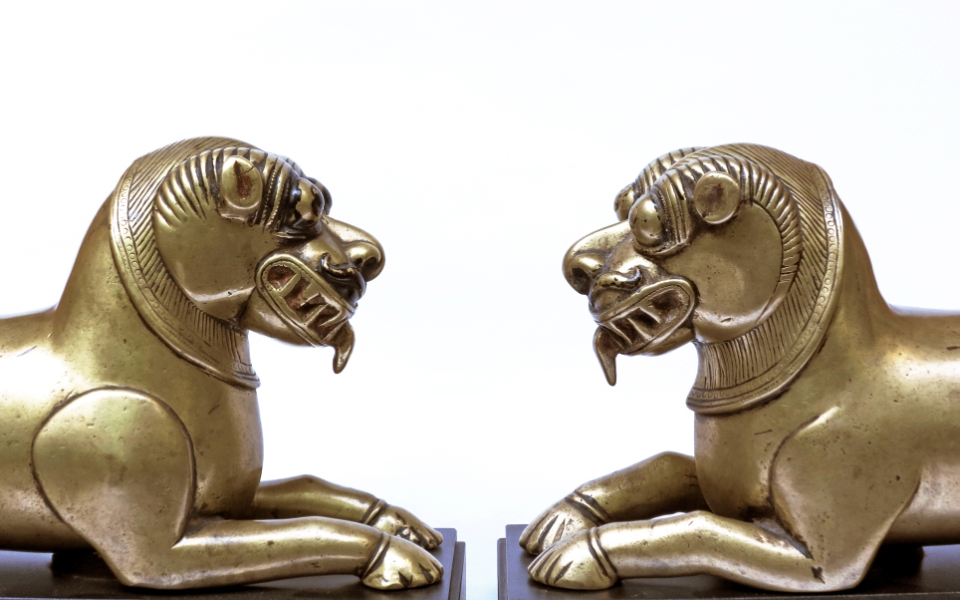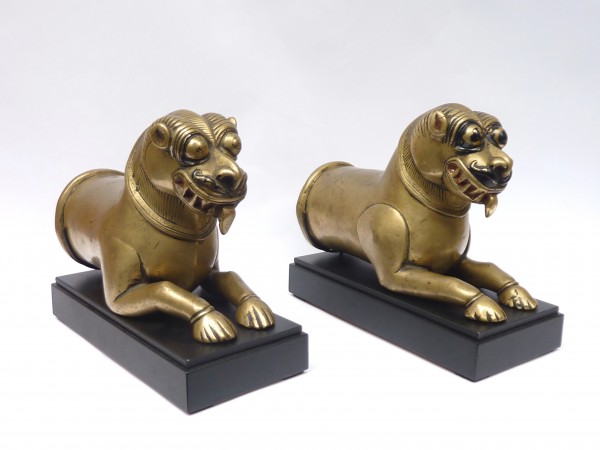
A Striking Pair of Palanquin Covers
This two striking bronze sculptures are an outstanding example of Indian palanquin covers, usually dateable from 16th to 17th century. Palanquins and sedan chairs were widely used throughout India for religious processions and local transport of royal and wealthy patrons especially in regions under Moghul or Muslim control.
Figurative palanquin covers were fitted to the front poles used to carry the palanquin, while the back portion of the pole was usually fitted with a simple designed or engraved metallic cylinder; their function was primarily decorative but probably they were also intended to wonder and frighten onlookers.

As a result of Islamic influence, covers with unusual, grotesque or monstrous animal forms were very popular and their concepts were probably derived or based on demons and monsters described in the Shah-nama or the Hamza-nama, two well-known Persian poems of the 11th century: tiger and lion heads were favorite subjects, as well as the kirti-mukha ( horned monster with a lion-like face) and the more recurring makara (sea monster).
Our example has all the distinctive characteristics of a kirti-mukha: a life-like frontal portion of a lion-headed creature, teeth showing and tongue protruding from his mouth, whiskers and bulging eyes. The animal has a crouched position with paws in front and it shows spirally decorated horns extending from forehead behind both ears; it has an engraved mane and wears a decorated necklace.
PAIR OF PALANQUIN COVERS
Bronze
India (Karnataka)
17th century
Cm 22 x 8,5 x 15 h.
References: M. D. Figiel, S. Leo, Ritual Bronzes of Maharashtra And Karnataka – Including the Bhuta region, Florida, 2007
© 2013 – 2023 cesatiecesati.com | Please do not reproduce without our expressed written consent
Alessandro Cesati, Via San Giovanni sul Muro, 3 – 20121 Milano – P.IVA: IT06833070151